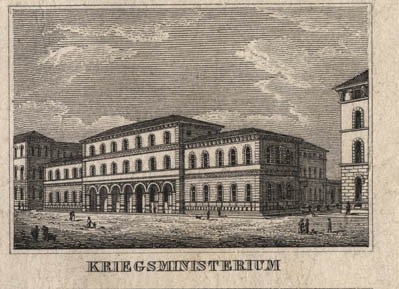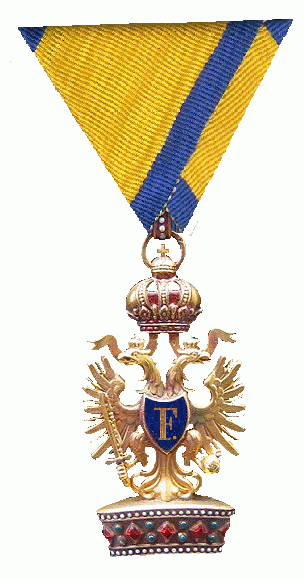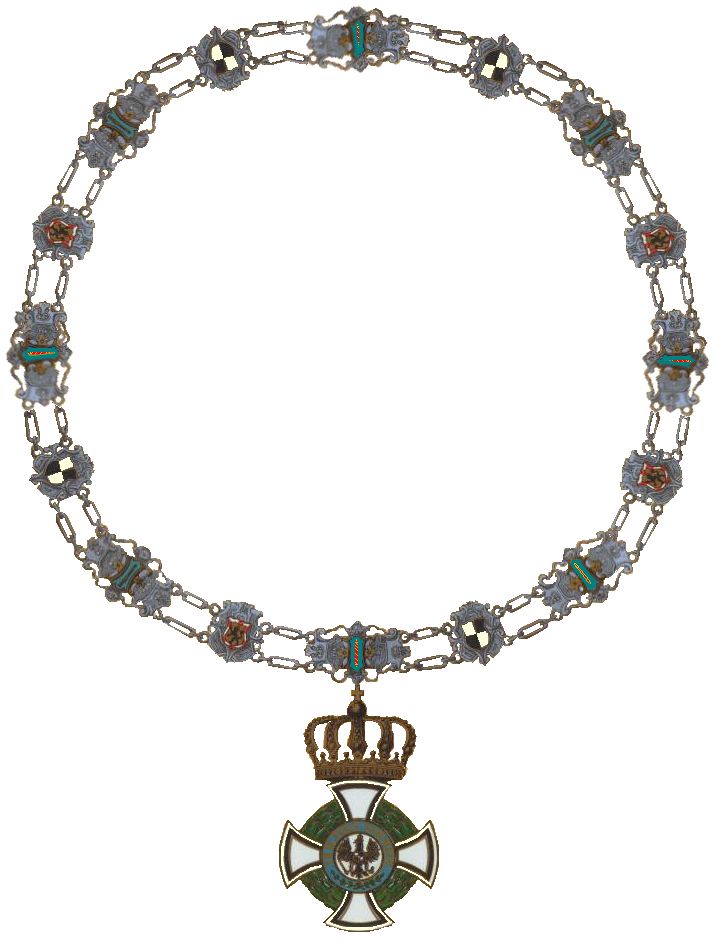|
Jakob Ritter Von Danner
Jakob Ritter von Danner (7 August 1865 in Queichheim/Landau – 28 December 1942 in Munich) was a Bavarian general in the Imperial German Army and the Reichswehr. As commandant of the Munich garrison of the ''Reichswehr'', he was a central figure in putting down the attempted Beer Hall Putsch by Adolf Hitler and the Nazis in 1923. Born Jakob Danner, he was commissioned a lieutenant in the Royal Bavarian Army on 7 July 1886. He was promoted to ''Oberleutnant'' (1st lieutenant) on 6 November 1894 and captain on 28 October 1901. He served in the German expeditionary forces sent to China during the Boxer Rebellion, where he earned the Bavarian Military Merit Order 4th Class with Swords, the Prussian Crown Order 4th Class with Swords and the Austrian Military Merit Cross 3rd Class with War Decoration. Danner was promoted to major on 7 March 1910 and at the onset of World War I commanded the 2nd Battalion of Royal Bavarian ''7. Infanterie-Regiment Prinz Leopold''. On 29 December 1914 ... [...More Info...] [...Related Items...] OR: [Wikipedia] [Google] [Baidu] |
Crown Prince Wilhelm Inspecting German Troops (1917)
A crown is a traditional form of head adornment, or hat, worn by monarchs as a symbol of their power and dignity. A crown is often, by extension, a symbol of the monarch's government or items endorsed by it. The word itself is used, particularly in Commonwealth countries, as an abstract name for the monarchy itself, as distinct from the individual who inhabits it (that is, ''The Crown''). A specific type of crown (or coronet for lower ranks of peerage) is employed in heraldry under strict rules. Indeed, some monarchies never had a physical crown, just a heraldic representation, as in the constitutional kingdom of Belgium, where no coronation ever took place; the royal installation is done by a solemn oath in parliament, wearing a military uniform: the King is not acknowledged as by divine right, but assumes the only hereditary public office in the service of the law; so he in turn will swear in all members of "his" federal government''. Variations * Costume headgear imitati ... [...More Info...] [...Related Items...] OR: [Wikipedia] [Google] [Baidu] |
Nazi Party
The Nazi Party, officially the National Socialist German Workers' Party (german: Nationalsozialistische Deutsche Arbeiterpartei or NSDAP), was a far-right politics, far-right political party in Germany active between 1920 and 1945 that created and supported the ideology of Nazism. Its precursor, the German Workers' Party (; DAP), existed from 1919 to 1920. The Nazi Party emerged from the Extremism, extremist German nationalism, German nationalist, racism, racist and populism, populist paramilitary culture, which fought against the communism, communist uprisings in post–World War I Germany. The party was created to draw workers away from communism and into nationalism. Initially, Nazi political strategy focused on anti–big business, anti-bourgeoisie, bourgeois, and anti-capitalism, anti-capitalist rhetoric. This was later downplayed to gain the support of business leaders, and in the 1930s, the party's main focus shifted to Antisemitism, antisemitic and Criticism of ... [...More Info...] [...Related Items...] OR: [Wikipedia] [Google] [Baidu] |
1942 Deaths
Year 194 ( CXCIV) was a common year starting on Tuesday (link will display the full calendar) of the Julian calendar. At the time, it was known as the Year of the Consulship of Septimius and Septimius (or, less frequently, year 947 ''Ab urbe condita''). The denomination 194 for this year has been used since the early medieval period, when the Anno Domini calendar era became the prevalent method in Europe for naming years. Events By place Roman Empire * Emperor Septimius Severus and Decimus Clodius Septimius Albinus Caesar become Roman Consuls. * Battle of Issus: Septimius Severus marches with his army (12 legions) to Cilicia, and defeats Pescennius Niger, Roman governor of Syria. Pescennius retreats to Antioch, and is executed by Severus' troops. * Septimius Severus besieges Byzantium (194–196); the city walls suffer extensive damage. Asia * Battle of Yan Province: Warlords Cao Cao and Lü Bu fight for control over Yan Province; the battle lasts for over 100 ... [...More Info...] [...Related Items...] OR: [Wikipedia] [Google] [Baidu] |
1865 Births
Events January–March * January 4 – The New York Stock Exchange opens its first permanent headquarters at 10-12 Broad near Wall Street, in New York City. * January 13 – American Civil War : Second Battle of Fort Fisher: United States forces launch a major amphibious assault against the last seaport held by the Confederates, Fort Fisher, North Carolina. * January 15 – American Civil War: United States forces capture Fort Fisher. * January 31 ** The Thirteenth Amendment to the United States Constitution (conditional prohibition of slavery and involuntary servitude) passes narrowly, in the House of Representatives. ** American Civil War: Confederate General Robert E. Lee becomes general-in-chief. * February ** American Civil War: Columbia, South Carolina burns, as Confederate forces flee from advancing Union forces. * February 3 – American Civil War : Hampton Roads Conference: Union and Confederate leaders discuss peace terms. * February 8 ... [...More Info...] [...Related Items...] OR: [Wikipedia] [Google] [Baidu] |
Ministry Of War (Kingdom Of Bavaria)
The Ministry of War (german: Kriegsministerium) was a ministry for military affairs of the Kingdom of Bavaria, founded as ''Ministerium des Kriegswesens'' on October 1, 1808 by King Maximilian I Joseph of Bavaria. It was located on the Ludwigstraße in Munich. Today the building, which was built by Leo von Klenze between 1824 and 1830, houses the Bavarian public record office, ''Bayerisches Hauptstaatsarchiv und Staatsarchiv München''. History The ministry was the successional institution of the royal Bavarian ''Hofkriegsrat'' (court war council, founded in 1620) and its follow-on institutions that were responsible for the military: * ''Oberkriegskollegium'' (upper war council, after 1799) * ''Kriegsjustizrat und Kriegsökonomierat'' (war justice council and war economic council, after 1801) * ''Geheimes Kriegsbureau'' (privy war bureau, after 1804) The name of the ''Ministerium des Kriegswesens'' changed to ''Staatsministerium der Armee'' in 1817, and finally to ''Kriegsminist ... [...More Info...] [...Related Items...] OR: [Wikipedia] [Google] [Baidu] |
Order Of The Iron Crown (Austria)
The Imperial Order of the Iron Crown (german: Kaiserlicher Orden der Eisernen Krone; it, Ordine imperiale della Corona ferrea) was one of the highest orders of merit in the Austrian Empire and Austria-Hungary until 1918. It was founded in 1815 by Emperor Franz I of Austria as a re-establishment of the original Order of the Iron Crown, which previously had been an order of the Napoleonic Kingdom of Italy. The order had three classes and, until 1884, all classes conferred automatic hereditary ennoblement. The third class conferred the rank of ''Ritter'', the second class conferred the rank of '' Baron'', and the first class conferred the title of Privy Councillor, the style of Excellency and the right to attend court. According to the order's statutes, only a limited number of members throughout the empire were allowed at any given time. The maximum number of 1st class knights was 20, for the 2nd class it was 30 and for the 3rd class 50, limiting the total number of members to 10 ... [...More Info...] [...Related Items...] OR: [Wikipedia] [Google] [Baidu] |
Service Medal
A service medal is an award to individuals who participated in designated wars, campaigns, or expeditions, or who have fulfilled specific service requirements in a creditable manner. Service medals are sometimes also Campaign medals. Examples of service medals United States Two of the service medals currently issued by the United States Armed Forces are the National Defense Service Medal and the Global War on Terrorism Service Medal. The National Defense Service Medal is normally issued to anyone who was called to active service during specific time periods. The Global War on Terrorism Service Medal is awarded to any active duty member of the United States military providing support for anti-terrorism operations for 30 consecutive or 60 non-consecutive days unless killed or wounded in the line of duty. The term "support" is interpreted very broadly. India The Special Service Medal is a military service medal of the Indian Armed Forces. The Special Service Medal is awarded unde ... [...More Info...] [...Related Items...] OR: [Wikipedia] [Google] [Baidu] |
Military Order Of Max Joseph
The Military Order of Max Joseph (german: Militär-Max-Joseph-Orden) was the highest military order of the Kingdom of Bavaria. It was founded on 1 January 1806 by Maximilian I Joseph of Bavaria, the first king of Bavaria. The order came in three classes: * Grand Cross (''Großkreuz'') * Commander's Cross (Kommandeurkreuz'') * Knight's Cross (''Ritterkreuz''). Individuals who received the order and were not already members of the nobility were ennobled and would add the title of " Ritter von" to their family name. A Bavarian title of nobility obtained through the Military Order of Max Joseph was valid for the recipient's life only. The order became obsolete in 1918 with the collapse of the Bavarian monarchy on Germany's defeat in World War I. However, the orders chancery continued to process outstanding award recommendations to at least 1922. Description The ''badge'' of the order was a white-enameled gold Maltese cross with balls at each cross point. The center medall ... [...More Info...] [...Related Items...] OR: [Wikipedia] [Google] [Baidu] |
Wound Badge
The Wound Badge (german: Verwundetenabzeichen) was a German military decoration first promulgated by Wilhelm II, German Emperor on 3 March 1918, which was first awarded to soldiers of the German Army who were wounded during World War I. Between the world wars, it was awarded to members of the German armed forces who fought on the Nationalist side of the Spanish Civil War, 1938–39, and received combat related wounds. It was awarded to members in the ''Reichswehr'', the Wehrmacht, SS and the auxiliary service organizations during World War II. After March 1943, due to the increasing number of Allied bombings, it was also awarded to civilians wounded in air raids. It was awarded when the wound was the result of enemy hostile action. In 1957, the West German government authorized a denazified (Swastika removed) version of the basic (black, silver, & gold) badges for wear on the Bundeswehr uniform, among other certain Nazi-era wartime awards. Classes The badge had three classes: * B ... [...More Info...] [...Related Items...] OR: [Wikipedia] [Google] [Baidu] |
House Order Of Hohenzollern
The House Order of Hohenzollern (german: Hausorden von Hohenzollern or ') was a dynastic order of knighthood of the House of Hohenzollern awarded to military commissioned officers and civilians of comparable status. Associated with the various versions of the order were crosses and medals which could be awarded to lower-ranking soldiers and civilians. History The House Order of Hohenzollern was instituted on 5 December 1841, by joint decree of Prince Konstantin of and Prince Karl Anton of . These two principalities in southern Germany were Catholic collateral lines of the House of Hohenzollern, cousins to the Protestant ruling house of Prussia. On 23 August 1851, after the two principalities had been annexed by Prussia, the order was adopted by the Prussian branch of the house. Also, although the two principalities had become an administrative region of the Prussian kingdom, the princely lines continued to award the order as a house order. The Prussian version was then known ... [...More Info...] [...Related Items...] OR: [Wikipedia] [Google] [Baidu] |
Sword
A sword is an edged, bladed weapon intended for manual cutting or thrusting. Its blade, longer than a knife or dagger, is attached to a hilt and can be straight or curved. A thrusting sword tends to have a straighter blade with a pointed tip. A slashing sword is more likely to be curved and to have a sharpened cutting edge on one or both sides of the blade. Many swords are designed for both thrusting and slashing. The precise definition of a sword varies by historical epoch and geographic region. Historically, the sword developed in the Bronze Age, evolving from the dagger; the earliest specimens date to about 1600 BC. The later Iron Age sword remained fairly short and without a crossguard. The spatha, as it developed in the Late Roman army, became the predecessor of the European sword of the Middle Ages, at first adopted as the Migration Period sword, and only in the High Middle Ages, developed into the classical arming sword with crossguard. The word '' sword'' continue ... [...More Info...] [...Related Items...] OR: [Wikipedia] [Google] [Baidu] |
Order Of The Crown (Prussia)
The Royal Order of the Crown (german: Königlicher Kronen-Orden) was a Prussian order of chivalry. Instituted in 1861 as an honour equal in rank to the Order of the Red Eagle, membership could only be conferred upon commissioned officers (or civilians of approximately equivalent status), but there was a medal associated with the order which could be earned by non-commissioned officers and enlisted men. Officially the Order of the Red Eagle and the Order of the Crown were equal. Most officials did however prefer to be appointed in the older Order of the Red Eagle. The Order of the Crown was often used as an award for someone who had to be rewarded while the Prussian government did not want to use the Order of the Red Eagle. Classes The Order had six classes: *Grand Cross – wore the Grand Cross badge on a sash on the right shoulder, plus the star on the left chest; *1st Class – wore the badge on a sash on the right shoulder, plus the star on the left chest; *2nd Class – wore ... [...More Info...] [...Related Items...] OR: [Wikipedia] [Google] [Baidu] |
.jpg)







